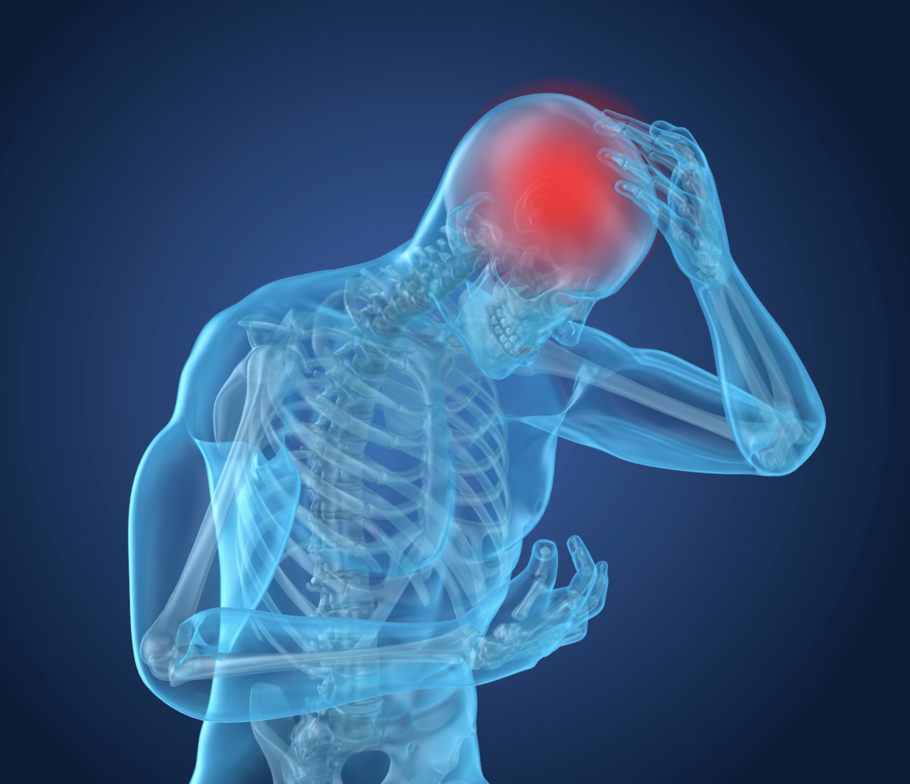Understand the basics and what to do after a head injury.
Head injuries can be a common occurrence in contact sports and everyday life.
Our clinic focuses on managing and treating individuals injured in motor vehicle collisions, at work, or while playing sports. Regardless of the mechanism of injury, the physiology of head injuries is the same. As research progresses, so does our understanding of the nature of specific injuries. Concussions are no different.
When I was in school, the common thought was an injury where the brain moves inside the cranium and hits the skull in the occipital region and frontal region.
Were that true, it always seemed reasonable to me that there would be evidence of swelling in the frontal or posterior lobes of the brain upon MRI or CT scan.
This is not the case.
There is no current imaging modality that can accurately detect or identify objective evidence of concussion.
Newer research now leads us toward a different possible mechanism that involves shearing forces between the white and grey matter of the brain. The brain is composed of white matter, mostly axons, while the grey matter is mostly cell bodies. White matter and grey matter have different cell types and, therefore, different cell densities.
When the brain experiences sudden whipping motions of the head, the junction between the white and grey matter experiences a shearing force that stretches that junction and can disrupt or decrease flow along those lines of communication. As a result, patients can experience a myriad of new symptoms.
Initially, there is a very brief excitatory phase where the individual may go rigid or stiff upon impact. Following this phase, the brain enters into a depressive stage that can last for several weeks. During the depressive phase, blood flow to the brain and ATP production (the fuel for the cells) is decreased. Patients will often experience symptoms such as headaches, blurred vision, dizziness, nausea, light or noise sensitivity, mental fogginess, forgetfulness, dysarthria (difficulty speaking what you may be thinking) and a myriad of other possible symptoms.
There is a common fallacy that concussions only occur when there has been a loss of consciousness (LOC). The fact is that only 10% of concussions involve a LOC. Only a consistent injury mechanism and one of these symptoms need to be present to diagnose an individual with a concussion.
How To Identify Symptoms
Identifying signs and symptoms is the first step in appropriately treating and managing a concussion. Symptoms often improve before the metabolic changes (decreased blood flow and ATP production) recover. Individuals are eager to resume contact sports and the activities they love performing.
The danger of head injuries happens when individuals return to activity before they are metabolically recovered and sustain a second head injury. If a second concussive injury is sustained before complete recovery, the depressive stage can increase from 30-45 days to 120 days. Before being cleared to return to full activities, a patient must be evaluated for underlying metabolic deficiencies. Aerobically stressing the patient (i.e. on a treadmill) will elicit symptoms if blood flow is still compromised.
What The Research Shows
The good news is that research shows that, if properly managed and appropriate return to play/activity measures are taken, there are no long-term consequences of having sustained a head injury. Proper assessment and diagnosis should happen as quickly as possible to ensure the fastest recovery and prevent any long term injuries after sustaining a concussion.
Chronic Traumatic Encephalopathy Separating fact from fiction.
Over the past several years, the topic of concussion has gained some mainstream steam in the media and sports. There has been a lot of talk about the effects of concussions and the relationship to sports injuries and Chronic Traumatic Encephalopathy (CTE).
The documentary regarding Aaron Hernandez and his off-field activities brought this issue into the spotlight. Aaron Hernandez's brain was examined and found to have very advanced CTE signs for someone at such a relatively young age. Today's blog aims to look at the research and how CTE relates to a concussion.
After hearing about the numerous cases of football players who have signs of advanced CTE, it's easy to conclude that repeated head injuries (concussions) are the direct cause of CTE. This is where we need to pump the brakes a bit. Reviewing the literature, we can find CTE evidence in individuals with prolonged depression and chronic opioid use.
We also know that professional NFL players use 3x the national average of opioids throughout their careers to play through the pain. Professional athletes commonly suffer from depression after retiring. So much of their identities can become tied to the fame that accompanies professional athletes. Once that is removed, players often have to find a way to replace that feeling of self-worth.
So is CTE cause by frequent head injuries?
Prolonged depression?
Habitual opioid use? The answer, based on the research, is a resounding 'Yes!'
Can we draw strict causation that CTE is caused by head injuries alone? No.
Concussions and the NFL
There have been several cases where professional NFL athletes have had long careers and show little to no signs of CTE. The reality is that CTE is probably a combination of multiple factors. What the research does tell us is that we still need to pay attention to athletes and concussions.
It also tells us we need better management of returning players to play at an appropriate time. We need better mental health care and recognition of depression for our athletes. We need better options for pain management for our athletes. This is where chiropractic can be at the forefront of treating and managing the potential effects of CTE.
Conclusion
Through proper assessment and evaluation of players who have sustained concussions, through regular care for athletes pushing their bodies to their limits, and through early recognition and awareness of depression, many of the harmful effects of CTE can hopefully be prevented.




